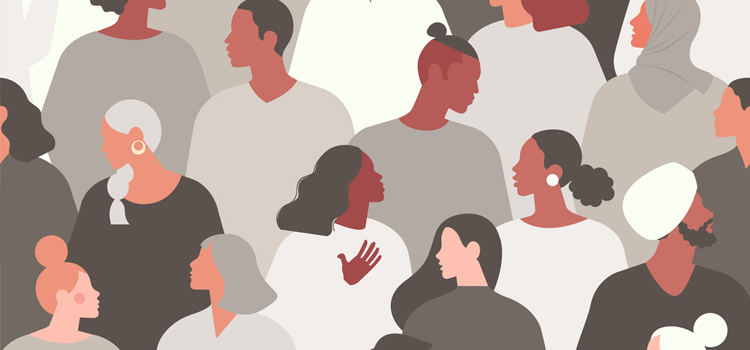YOUTH GROUP LESSON ON RACIAL BIAS (2 OF 4)

Written by Natasha Menifee
This is the second of four lessons that we’re releasing on the topic of racism.
You can view the first lesson here, which answered this question: What is racism?
The goal of the second lesson below is to help students become aware of their unconscious biases and prejudices, which will help prevent them from passing judgment against others.
We want to help you teach students what the Bible has to say about racism, and how they can align their lives accordingly.
I hope this lesson is a helpful resource for your youth group.
Nick Diliberto, Ministry to Youth
Note: As mentioned above, this is the second of 4 lessons on racism. Check out the other three lessons here:
Looking for youth ministry curriculum? Check out the…
4TH OF JULY BUNDLE – Save 75% on 8 youth ministry series, 2 junior high series and 15 back to school games. Only available through Thursday, July 10!

YOUTH GROUP LESSON ON RACIAL BIAS (2 OF 4)
DOWNLOAD THE PDF OF THIS LESSON
Bible: Matthew 7:1-5; Galatians 3:28; 2 Corinthians 5:17-20
Bottom Line: Becoming aware of your unconscious biases and prejudices helps you prevent passing judgment against others.
OPENING ACTIVITY: ASSUMPTIONS
This activity can be done either in-person or online.
PREP
Before students arrive, queue up the video, “What Judgements Do You Make?”
Watch video here:
GO HERE to watch the video on YouTube.
Everyone has certain biases.
In an experiment by SoulPancake, biases are challenged when teens are paired up and asked to make assumptions about their partner’s appearance.
However, here’s the catch; they never actually see their partner.
There are two ways to use this video with your students….
- Option 1: Show the experiment with both audio and video.
- Option 2: Play the video twice.
The first time, play the audio but do not show the video.
Allow students to draw conclusions based on what they hear.
The second time, show the video with the audio.
For both options, follow-up with a quick discussion on what they saw in the video.
Ask students to share about the assumptions they made and what they think influenced their opinions.
Then, go deeper and discuss the biases that could have led to some of the drawn conclusions.
Here are some possible discussion questions to use:
- What surprised you the most in the video?
- What was the biggest lesson you learned after watching it?
- What can we all learn about assumptions from the video?
TEACH
After the activity, say: Our activity demonstrated that we are all conditioned with certain biases.
That means you are influenced by your environment and the stereotypes that already exist in the world.
It can be challenging to separate yourself from the influence of society.
However, you can become more aware of your unconscious thinking and how the world around you influences you.
Let’s begin by talking about the words bias and prejudice.
Ask: Can someone tell me the definitions of those words – bias and prejudice?
Can you give an example?
Give students time to share their definitions and a few examples.
Prejudice can be defined as favoring one thing, person, or group over another in an unfair way.
Bias is unequal favor for or against an individual, group, or belief.
Bias is usually demonstrated in a close-minded, discriminatory, or unfair way.
You can think of it like this… prejudice is a set of thoughts, and bias is the action taken based on those thoughts.
THE BLUE EYES/BROWN EYES EXPERIMENT
Throughout the 50s and 60s, Martin Luther King Jr. was the most visible leader and spokesperson for the civil rights movement.
When he was assassinated, many people were left heartbroken and shocked.
For Jane Elliott, a school teacher, the devastation she felt moved her to action.
On April 5, 1968, the day after Dr. King’s assassination, she conducted an “experiment” in her classroom.
Elliott divided her class by eye color.
She separated the blue-eyed children from the brown-eyed children.
On the first day, the blue-eyed children were praised as nicer, neater, smarter, and better than those with brown eyes.
Elliot gave the blue-eyed children special privileges, while the brown-eyed children were criticized for their behavior and performance.
On the second day, the roles were reversed.
Brown-eyed children were praised, and the blue-eyed children were treated as inferior.
Jane Elliot observed that those treated as inferior took on the emotions, performance, and behaviors of children who felt inferior.
She also noticed that those treated as “superior” discriminated against those who were “inferior” – even though they had previously been kind and loving to others.
Years later, Elliot met up with the children from the first-year experiment.
The students, who were now young adults, expressed that they learned what it was like to be looked down upon at a young age, and it affected the rest of their lives.
Jane Elliot said, “They found out how to hurt one another, and they found out how it feels to be hurt in that way, and they refuse to hurt one another in that way again.”
Elliot’s message is there is only one race – the human race.
Skin color differences are about the amount of melanin in our skin. Melanin does not make different races; it makes different colors.
We are not born with attitudes of prejudice and bias. These attitudes are learned over time. According to Jane Elliott, “if it can be learned, it can be unlearned.”
(Jane Elliott is a teacher and diversity trainer famous for her “Blue Eyes/Brown Eyes Exercise. After 50 years, she continues to educate on the construct of race and what everyone can do in the fight against racism. For more information on Jane Elliott, visit https://janeelliott.com)
Say: This lesson will help us understand how becoming aware of your unconscious biases and prejudices helps you prevent passing judgment against others.
Read Matthew 7:1-5.
“Do not judge, or you too will be judged.
For in the same way you judge others, you will be judged, and with the measure you use, it will be measured to you.
“Why do you look at the speck of sawdust in your brother’s eye and pay no attention to the plank in your own eye?
How can you say to your brother, ‘Let me take the speck out of your eye,’ when all the time there is a plank in your own eye?
You hypocrite, first take the plank out of your own eye, and then you will see clearly to remove the speck from your brother’s eye.
Say: In Matthew, we are cautioned not to judge others, but rather to look at what is going on within our own heart.
Any judgment that exists should be inward to ourselves and our actions.
Often, when we pass judgment on others, it is based on thoughts we never say out loud. We may “only” think it, but our actions show how we truly feel about others.
The danger of judging others is that it can grow into words and evolve into action.
For example…
- You believe that whites, blacks, and people of all color are all created equally, and you think we should all live together in unity. But you don’t take steps to make friends with those of a different color than yourself.
- You believe girls should have the same rights as boys, but you make fun of the girl who wants to try out for the football team.
Ask: Can you think of another example?
Allow time for students to discuss and give their own examples.
It’s important to understand what is at the heart of these feelings because once you are aware, you have the ability to change.
We should be careful not to judge any other person’s heart and intentions besides our own.
This means we don’t develop opinions about a person based on a single act or encounter.
It can be easy to judge someone from one experience without taking the time to get to know the person.
Say: Here’s an example of what this can look like…
You look at someone’s Instagram or watch a few TikTok videos, and you feel like you know the person.
Is it possible to really get to know someone after reading a few posts or watching them do a ridiculous dance?
Probably not.
As a society, we often label people quickly, and many times it’s based on our unconscious biases or prejudices rather than reality.
When we take the time to listen and understand each other, we eliminate the possibility of making unfair assumptions about someone’s character.
It can be mUch easier to recognize bias or prejudice in others before we see it in ourselves.
In Matthew 7, the speck is a symbol of a small fault or flaw.
The plank symbolizes a larger moral fault.
Many of us (myself included) are quick to point out a speck in others but do not see the plank in our own eye.
This can be especially true when addressing race, socioeconomic, or gender biases.
Some people may have strong biases that are expressed in actions that hurt others.
The biases you feel might not be expressed in the same intense way, but that doesn’t mean you can dismiss your thoughts like they aren’t wrong.
It’s only when we deal with our own assumptions that we can help others.
Today, I challenge you to look into your own heart.
Think about your own actions towards others who are not like you. Don’t worry about the people in this room or on the screen. Don’t worry about the people with us who you know have passed judgment on others.
The goal is to focus on yourself and the plank in your own eye.
You are not here to think poorly of yourself. You are here to begin a journey of transformation for yourself. A transformation that will lead to becoming more like Jesus.
Think about these questions…
- Have you ever crossed the street to avoid a group of young black males?
- Do you secretly breathe a sigh of relief when the bearded, olive-skinned man waits for the next elevator?
- Are you glad if you don’t get the Hispanic student with a heavy accent as your partner in class?
- Do you assume the less fortunate student cheated when he/she makes a better grade than you? Because how can they be smarter if they’re poorer?
These thoughts are driven by stereotypes and might not seem like a big deal.
You may assume that no one noticed … but the people who are judged notice.
Self-reflection helps you take steps to repair broken thinking and wrong beliefs about others.
You may be thinking…
- What if I disagree with what my family and/friends think?
- What happens if I am judged or mistreated because I disagree?
- How do I make those changes on my own?
All of those are valid and very real questions.
Give the group a few minutes to explore these questions and share their perspective.
The truth is you need God’s help in overcoming biases and changing your thoughts about others.
This does not mean you won’t face obstacles and opposition when you take a stand for what is right.
But it does mean He is with you every step of the way. God loves you, and He has promised never to leave you. Ask Him to help you find peace and strength in Him.
Read Galatians 3:28.
There is neither Jew nor Gentile, neither slave nor free, nor is there male and female, for you are all one in Christ Jesus.
Paul wrote to the churches in Galatia to remind them that both Jews and Gentiles are one in Christ.
At one time, the Law distinguished between Jews and Gentiles, and Jews often considered themselves superior to Gentiles.
Paul wanted to be clear that, in Christ, no individual group is more important than any other group.
With this in mind, let’s read 2 Corinthians 5:17-20:
“Therefore, if anyone is in Christ, the new creation has come: The old has gone, the new is here! All this is from God, who reconciled us to himself through Christ and gave us the ministry of reconciliation: that God was reconciling the world to himself in Christ, not counting people’s sins against them. And he has committed to us the message of reconciliation. We are therefore Christ’s ambassadors, as though God were making his appeal through us. We implore you on Christ’s behalf: Be reconciled to God.”
As Christians, we have a responsibility to carry out the ministry of reconciliation.
Ministry of Reconciliation – What does this mean?
To better understand the phrase “ministry of reconciliation,” let’s first define the words in that phrase.
According to Webster’s Dictionary, the word reconcile is defined as “to restore to friendship; settle or resolve (as in reconciling differences).”
The friendship to be restored is between God and humanity.
The difference to be resolved is sin.
Sin separated God from man during the fall in The Garden of Eden (see Genesis 3).
Ministry has many definitions.
For our lesson, we will use this definition: “a person or thing through which something is accomplished.”
The something to be accomplished is a restored relationship with God.
The person/thing or, in this case, people it happens through are Christians (see 2 Corinthians 5:16-21).
Let’s put it all together… The “ministry of reconciliation” is accomplished when we (Christ-followers) help restore the relationship between mankind and God.
It also happens when we help restore relationships between mankind and mankind.
Jesus came to unite us back to him and each other.
Our goal should be the same, unity over division.
You may have grown up with beliefs about certain people groups (i.e., gender, ethnicity, religion, etc.).
Take time to examine those beliefs and see if they bring unity or cause division with others.
As you grow in your walk with God, you become aware and responsible for the way you treat others.
In other words, when you know better, we should do better.
Doing better means, we actively seek to recognize the biases we may have.
Doing better means, we look at our actions and ask God to help us change and become more like Him.
Martin Luther King Jr. said, “Whatever affects one directly, affects all indirectly.”
If anyone experiences bias and prejudice, it hurts all of us.
God desires that we would all be one in Him.
Today, let’s a moment to ask God to reveal anything in us that may affect how we treat and view others.
Close in prayer.
SMALL GROUP DISCUSSION QUESTIONS
- Before today’s lesson, were you aware of any biases you felt towards certain groups of people? Have you become aware of some after the lesson? If so, explain.
- When was the last time you passed judgment against someone or judgment was passed against you? What was the outcome of the situation?
- Why is it easier to see someone else’s flaws instead of our own?
- Racial bias is not the only type of bias that exists in our society. What other biases exist today?
- What are the risks of not addressing your biases (conscious and/or unconscious)?
- How has your perspective changed since looking at bias through a Biblical lens?
- Have you ever experienced actions from others that were motivated by bias?
- Often (not always) bias and the pre-judgment of others is learned behavior from the environment in which we live. What are some ways you can change your thinking, even if you can’t change your environment?
- How can we support others who may be struggling with some form of bias?
- How can Jesus bring healing and reconciliation to those who have been offended or were offenders?
DOWNLOAD THE PDF OF THIS LESSON
Note: As mentioned above, this is 2 of 4 lessons on racism. Check out the other three lessons here:
About the writer: Natasha Menifee is a writer, teacher and serves as the Christian Education Director at First Baptist Church in Winchester, Kentucky. She holds two master’s degrees from Georgetown College in Learning & Behavior Disorders and Teacher Leadership. She is t he proud mother of two daughters.
About this lesson: This lesson is the result of a collaborative effort of 100+ youth ministry leaders from around the world, and the extensive work of our writing team. We spent weeks listening to youth leaders on Zoom calls, researching the topic, asking others their personal experiences regarding racism, and praying about what direction to take.
Looking for youth ministry curriculum? Check out the…
4TH OF JULY BUNDLE – Save 75% on 8 youth ministry series, 2 junior high series and 15 back to school games. Only available through Thursday, July 10!

